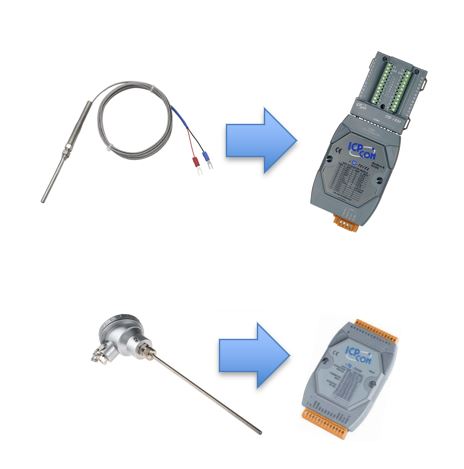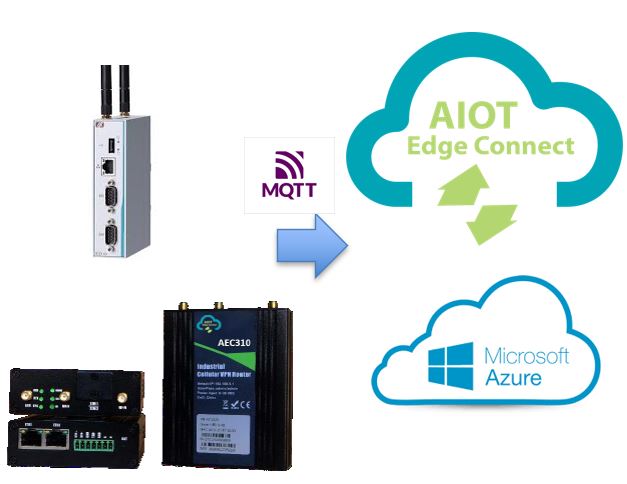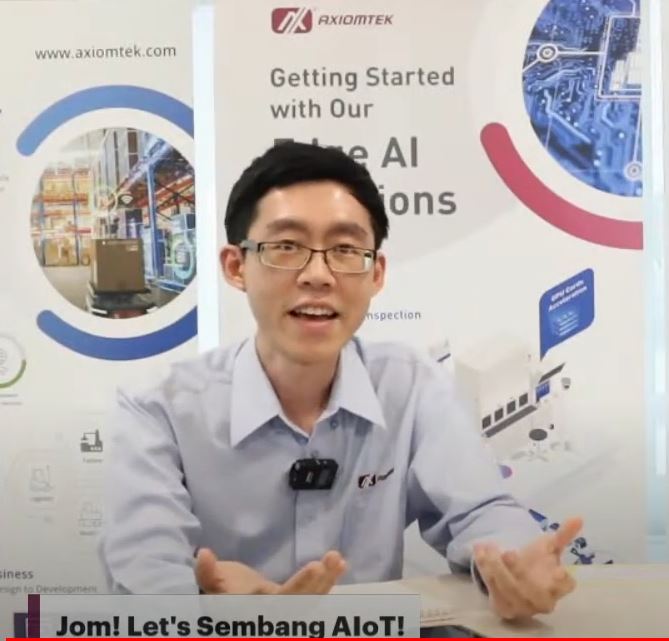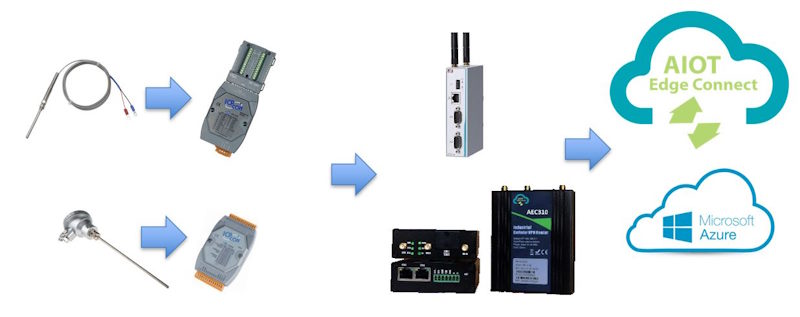There are many processes in manufacturing that require heating, for heating, we couldn’t run away from measuring the temperature. Heating processes that do forging on the metal, welding, boiling, pasteurizing, Drying and many other processes require a precise temperature to ensure good product quality.
What are the main sensors for measuring temperature? and What are the IIoT device that allows us to digitize the reading for monitoring and control and also provide a good visualization with good data analytics at the cloud level? these are the main subjects we were discussing in this ” Sembang AioT session”.
There are three types of temperature sensors that are widely used in industries.
1. Thermocouples (TCs):
Working Principle: Based on the Seebeck effect, where a voltage is produced when two different metals are joined together and the junction is heated.
Application: Used in various industrial applications due to their wide temperature range, ruggedness, and accuracy.
2. Resistance Temperature Detectors (RTDs):
Working Principle: RTDs work on the principle that the electrical resistance of a material (typically platinum) changes with temperature.
Application: Used in precision temperature measurement applications as they offer high accuracy and stability over a narrow temperature range.
3. Thermistors:
Working Principle: Thermistors are temperature-sensitive resistors whose resistance changes significantly with temperature. There are two types – NTC (negative temperature coefficient) thermistors and PTC (positive temperature coefficient) thermistors.
Application: Used for accurate temperature measurements in a limited temperature range.
Their applications are as follows:-
Thermocouples are suitable for measuring high temperatures and are used in various industrial applications, such as furnaces and processing plants. Wide temperature range -200 C to 1800 degree C.
RTDs offer high accuracy and stability for lower temperature measurements and are widely used in scientific and industrial settings. The range of the temperature is from -250 C to 1000 Degree C.
Thermistors are typically used in low to moderate temperature measurements, including climate control and medical devices. The temperature ranges from -55 C to 114 degree C

after having the right temperature sensors elements, next is to have a suitable IO module that allows you to do measurement. The picture beside this shows some Temperature module with RTD input measurement and Thermocouple inputs that supports Modbus RTU or Modbus TCP that provide a interface on serial or Lan port to be connected to the Axiomtek IIoT edge gateway or the AEC310 4G router gateway .
There are several way of how to treat the data collected. One of them is to allow the IIoT edge gateway or another 4G gateway to acquire from it, like what it is showed in picture at the right hand side
As for Cloud wise, AIoT Edge Connect cloud platform that is sitting on the Microsoft Azure can be used to receive all data collected and can then be shown on the Cloud Dashboard.


In the Live session, Kien Leong shared some AI data set requirement and standard used in the training or even deep learning.
Purpose of dataset is also discussed, other that having dataset for AI training, it is equally important to have it to test and evaluate the accuracy of AI model.
70-20-10 proportion of dataset is a good to produce a practical AI deployment where 70% of dataset for training , 20 validation dataset and 10 for testing to justify the accuracy. That is generic to most AI application. Another thing about the Classes of the dataset is also discussed.
To find out more, you may watch this live session and do subscribe to this channel to get the upcoming interesting topic on AIoT with the link below:-
